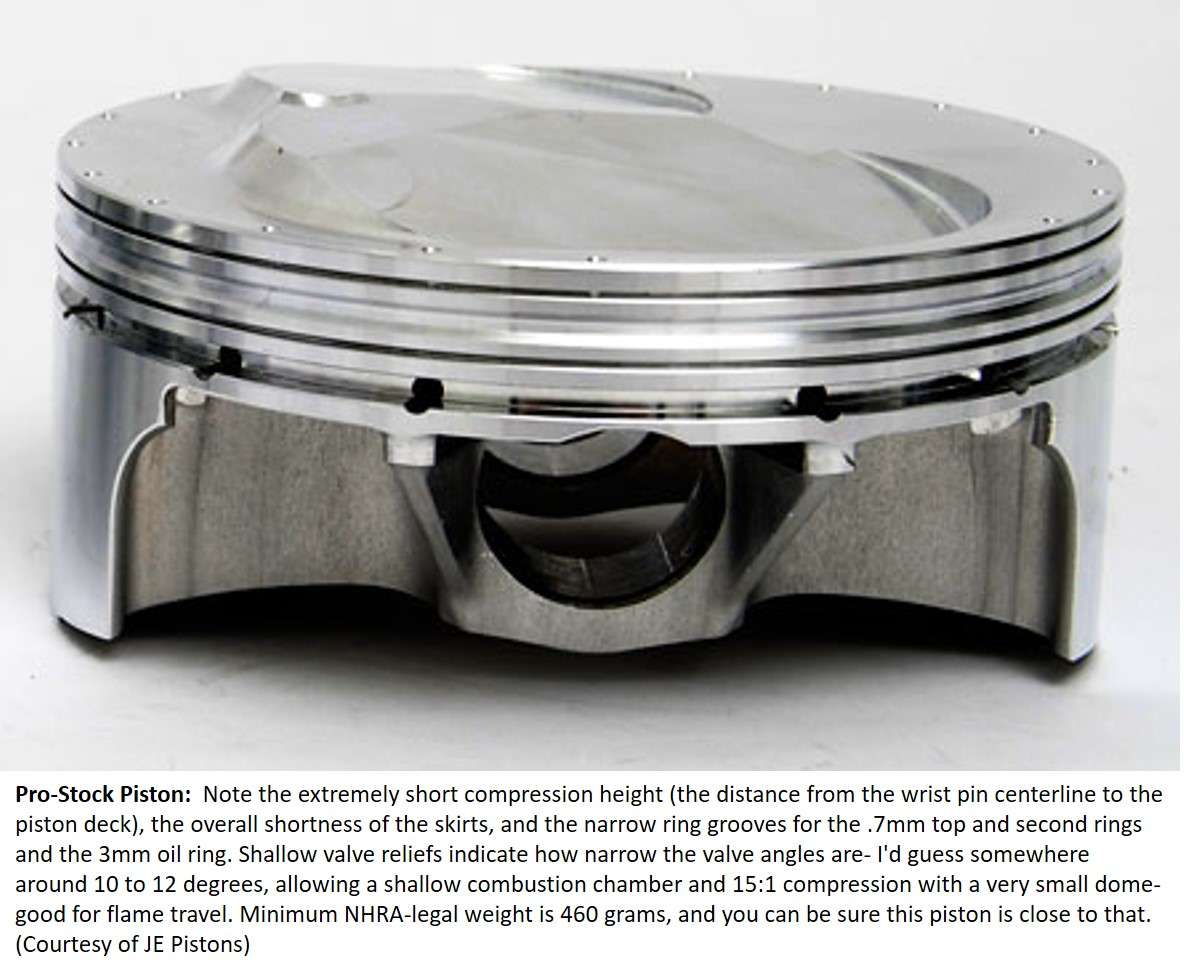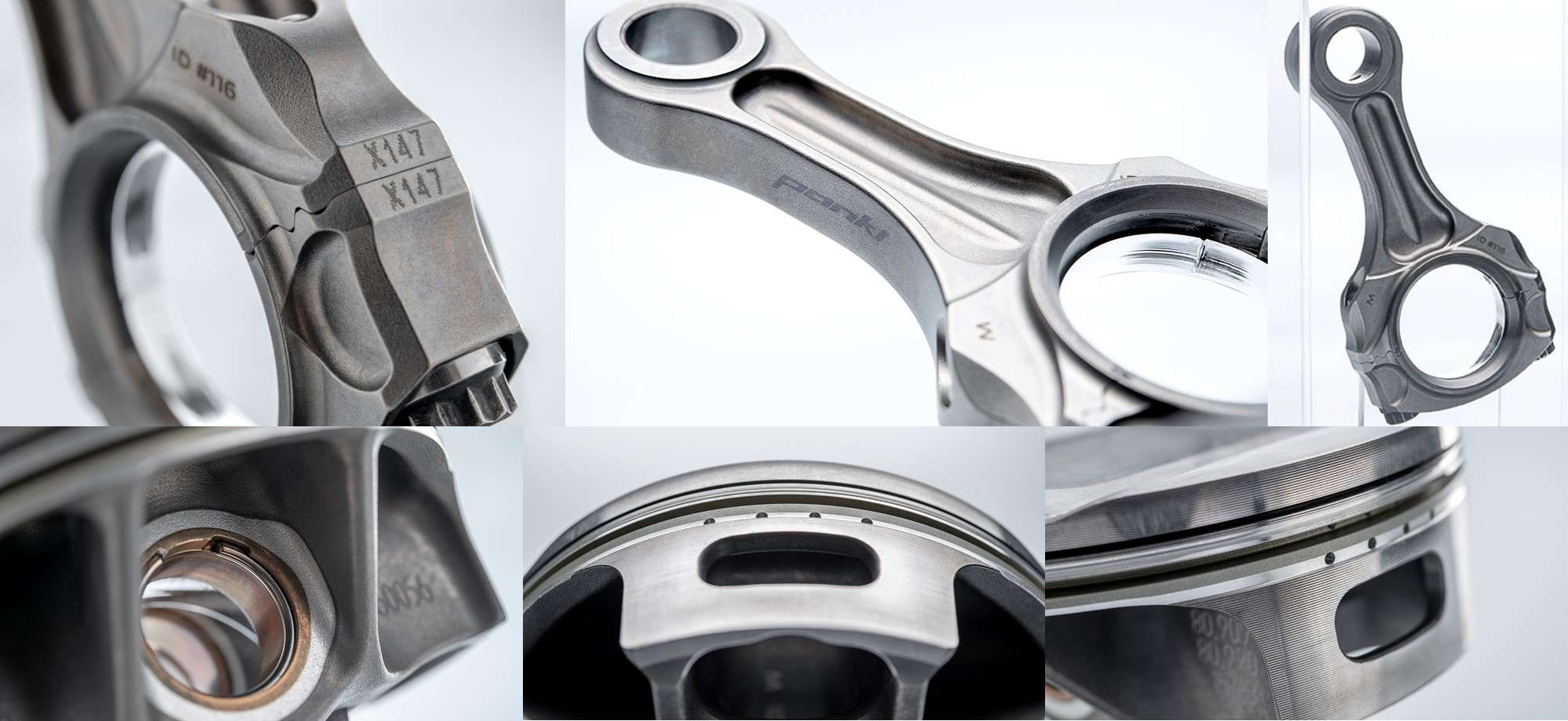Extreme in what regard?
Drag race engines, while typically using archaic rule platforms are pretty insane, with piston speeds exceeding anything ever seen in F1 and flexing everything. Granted, short run times help with that, but again, they push it to the extreme.
Advanced? Modern sportbike engines have a lot of F1 DNA from that era. MotoGP engines, being still NA and pretty open rules are the ultimate NA powered race engines.
The grooves between the piston crown and top ring land were "detonation grooves". The idea is the little ribs would induce area change and break up the pressure wave before it hit the top ring land. You only see them now on Wiseco pistons that aren't updated designs. You do typically see an anti-detonation groove between the 1st and 2nd ring land, but on NA engines, the rings are packed so tight, there really isn't room for that stuff, especially when you factor in lateral gas ports on the top ring land.
Here is one with the groove between the 1st and 2nd ring land:




